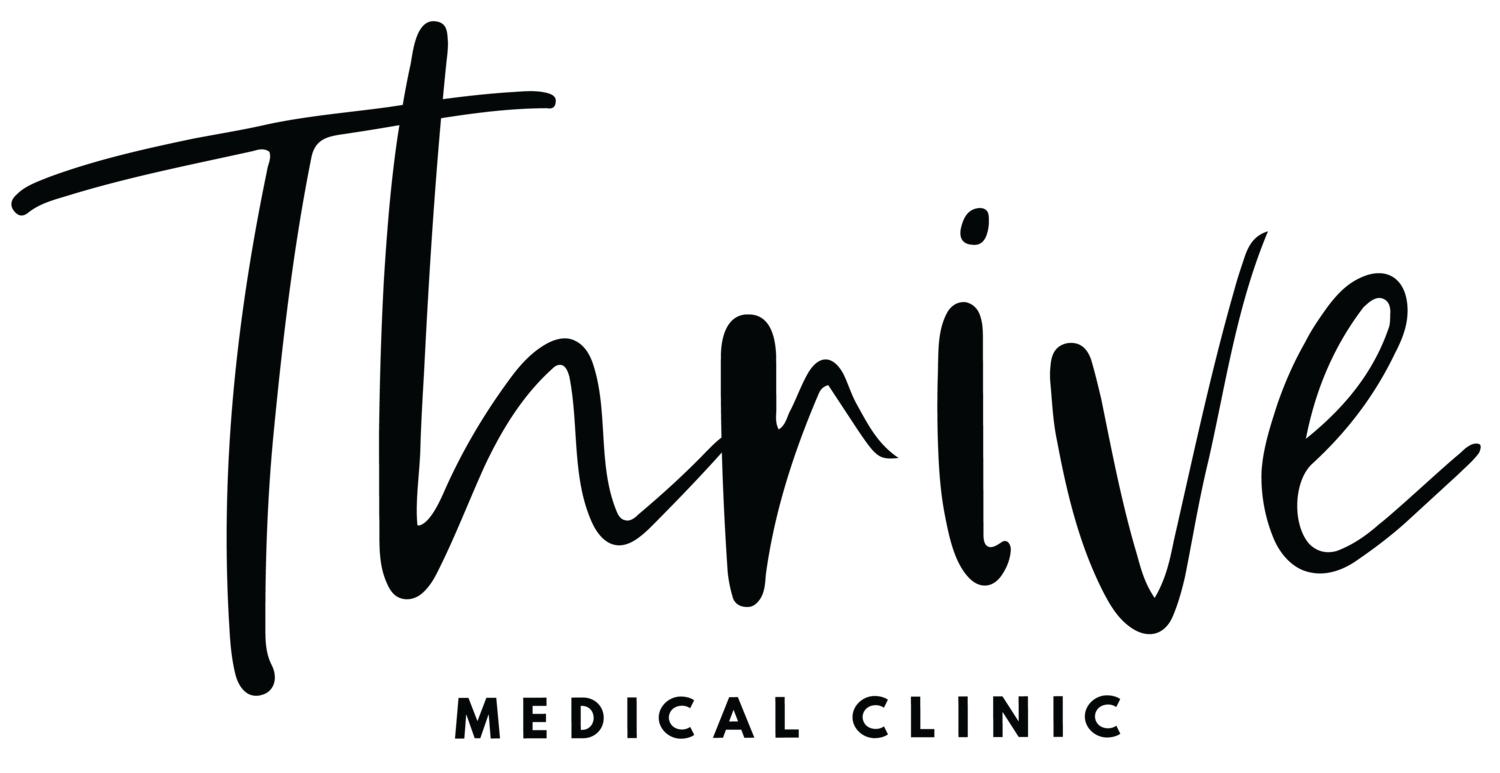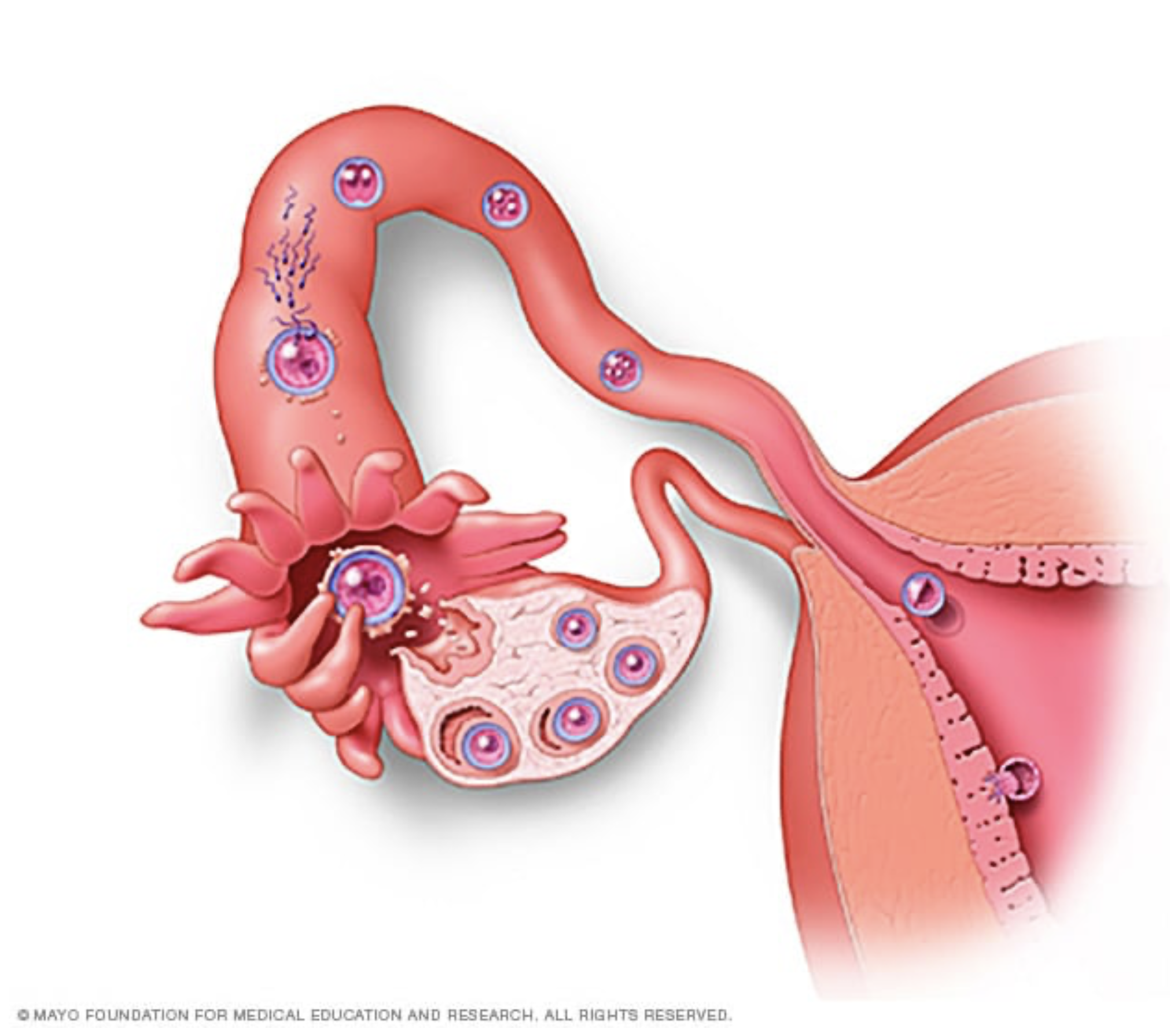Fetal Development Basics
In this blog we’ll be covering the basics of fetal development (aka what the heck is happening in your body), hopefully, in a way that is understandable, and a little less intimidating than your typical medical blog. Pregnancy is typically stretched out over a nine-month span and is divided into three portions of time called trimesters. During each trimester, a lot is changing, and it can be helpful to know what’s going on in your body and understand how the pregnancy is progressing through each stage of fetal development.
The First Trimester
Each trimester is important and eventful – but the first trimester is surprisingly busy, as a human is rapidly forming from the beginning of conception.
Weeks 1-3: Conception & Fertilization
Conception usually takes place somewhere around two to three weeks after the first day of your LMP – or last menstrual period. This is when the father’s sperm and the mother’s egg unite in one of the fallopian tubes and form a unique one-celled entity, referred to at this point as a zygote. This zygote is made up of the chromosomes and DNA needed to determine the unique physical traits of your baby… sex, eye color, and physical traits are already decided at this point and just need time to develop.
Week 4: Implantation
Over the next several days, the zygote travels down the fallopian tube, where it then, typically (read about ectopic pregnancy), implants itself into the nourishing uterus wall and continues to grow. During its travel, the one-celled zygote has been rapidly splitting and multiplying in cell count, until the baby is referred to as an embryo.
Week 5
By week 5 (or, the third week after conception), the baby has formed three main layers – getting ready for his/her skin, nervous systems, eyes, inner ears, heart, bones, ligaments, kidneys, lungs, intestines, and much more. The baby’s heart begins to beat during this week – just about 22 days after conception.
Week 6
At 6 weeks, the baby’s brain and spinal cord are developing, and little arm buds appear. The eyes and ears are continuing to develop, and the baby’s busy heartbeat can be measured through an ultrasound.
Week 7
During week 7, face features begin to form, including the nose and eyes. The brain is continuing to grow at an incredible rate, and leg buds appear.
Week 8: By 8 weeks into pregnancy, the baby’s fingers, nose, and upper lip have formed, and the baby is about ½ inch long in size. Electrical activity begins in the developing brain and nervous system, and they now have a four- chambered heart. The bluish amniotic sac surrounds the embryo and the fluid protects them.
Week 9
At 9 weeks, the baby’s toes can be counted and the eyelids form. In girls, ovaries are identifiable. Your body is working hard, as over 100,000 new brain cells are being formed every minute. The baby is active and responds to touch and moves spontaneously.
Week 10
At this point, he/she has graduated out of the embryonic period and now has developed more than 90% of the features that are found in adults. During this period the embryo reaches a transition point. It is now called a fetus, a Latin word meaning young one or offspring. Now, the baby mainly needs time to grow.
Week 11
By now, the baby likely measures about 2 inches long. Red blood cells develop in his/her liver, and the baby can stretch, sigh, move around, and grasp for an object.
Week 12
By 12 weeks the baby’s fingernails are forming and bones are hardening. Thumb-sucking and yawning is normal, and the baby is likely measuring about 2½ inches long.
How do I know how far along I am?
Pregnancy dating can be a bit confusing. Typically, a pregnancy is measured from the last normal period that a woman has (referred to as her LMP), although this is usually not when conception actually occurred. Using this type of pregnancy dating may or may not accurately represent how far along you are, depending on several factors.
The most accurate way to find out how far along you are is through a confirmation ultrasound, which will tell you:
If you are really pregnant (this cannot be medically confirmed through a pregnancy test alone),
How far along you are (and give you an estimated due date),
If your pregnancy is safely located in the uterus, where it should be (it is essential to rule out an ectopic pregnancy, which can be a life-threatening situation),
And, if there is more than one baby.
Thrive Medical Clinic provides a confirmation ultrasound by a licensed medical professional at no charge with no insurance needed. It is important to us to provide you with a safe place to gather medically accurate information about your pregnancy and pregnancy options (abortion, adoption, and parenting), from a source that does not profit from your abortion, adoption plan, or any of your pregnancy decisions.
Second Trimester
The second trimester is filled with external signs of what’s taking place inside. Beginning to show, and feeling your baby kick, roll around, or punch, are all reminders that often can make everything seem “more real.” Being aware of what’s going on each week can be both interesting and helpful.
Week 13
Even though the baby’s sex has been genetically determined since conception, by 13 weeks along (11 since conception) external genitalia can now indicate whether the baby is a girl or a boy. Also, the baby’s kidneys are starting to work and can make and release urine.
Week 14
Between 13 and 14 weeks, the baby’s weight and size increase significantly. It’s arms and legs are nearly proportional to the rest of the body, and tiny taste buds cover the inside of the mouth. The fetus is now able to swallow.
Week 15
At 15 weeks, the baby’s hair pattern is forming on the head, and the baby responds to light touch.
Week 16
By 16 weeks the baby’s skin is thickening and chubby cheeks are beginning to take shape. He/she can slowly move his/her eyes, and teeth are starting to form.
Week 17
17 weeks in (or just 15 weeks after conception), toenails begin to form, and the baby’s busy heart is keeping her/him active – pumping around 100 pints of blood per day.
Week 18
At this point, the baby’s ears have taken shape and he/she may be able to pick up sounds. The digestive system has also started working, and the baby is likely about 5½ inches long from head to rump.
Week 19
By 19 weeks, the baby starts to get covered with a greasy coating, called vernix, which helps protect the fine skin and keep it healthy.
Week 20
At 20 weeks, the baby’s bronchial tree has almost finished forming in the respiratory system. He/she is sleeping and waking up regularly.
Week 21
From here on out, the baby’s activity, lung patterns, and heartrate begin to follow steady, daily patterns.
Week 22
At week 22, the baby has grown hair and eyebrows. The baby likely weighs about 1 pound and is measuring about 7½ long from head to rump.
Week 23
By around 23 weeks (21 weeks after conception), the baby’s lungs develop some ability to breathe air. For some fetuses, it is possible for them to survive outside of their mother’s womb at this point. Hiccups and quick eye movements become normal.
Week 24
24 weeks into fetal development, the baby’s skin is wrinkly and clear, making it look somewhat pink. Through a 4D ultrasound, the baby can be seen smiling, frowning, and making a wide range of other face expressions.
Week 25
At 25 weeks the baby may respond with jumps and kicks to it familiar voices or sounds.
Week 26
By 26 weeks, the lungs are strengthening. The baby’s eyes may open and she/he begins to instinctively blink when startled.
Week 27
At the end of the second trimester, the baby’s is experimenting with his/her athletic skills by doing somersaults. The baby’s nervous system is steadily maturing, and protective fat is evening out his/her skin.
Third Trimester
Week 28
Heading into the third trimester, the baby has grown eyelashes and formed the components needed for his/her sense of smell.
Week 29
The baby’s pupils may respond to light as early as 29 weeks (27 weeks after conception), and the eyes can make tears.
Week 30
At 30 weeks, the baby’s brain and nervous system is maturing, and he/she can now tell the difference between low and high-pitched noises.
Week 31
By 31 weeks into pregnancy, the baby has completed the majority of fetal development – now the main job is to gain weight.
Week 32
At 32 weeks, the baby practices more breathing movements, getting stronger for life outside of the womb.
Week 33
By 33 weeks, the baby’s bones are still hardening, though the skull stays flexible, making the upcoming journey through the birth canal easier.
Week 34
By 34 weeks, the baby’s fingernails have grown all the way to the tips of their fingers. The baby is getting stronger, and now probably weighs over 4½ pounds.
Weeks 35-40
During these last six, or so, weeks of pregnancy, the baby is continuing to mature, put on weight, and get ready for birth. He/she will develop a firm grip during this time; and though space in the uterus has become tight, the baby will likely stay busy with kicks and wiggles until he/she is ready to be born.
How far along am I?
If you don’t know how far along you are, or if haven’t already had your pregnancy medically confirmed, we provide confirmation ultrasounds by a licensed medical professional at no charge with no insurance needed. It’s our goal to be here for you, as that first step, and equip you with the support and services that you need to thrive, in a safe and non-judgmental environment that doesn’t profit from any of your pregnancy decisions.
“Your clinic has such a welcoming kind energy. Beautiful atmosphere, great communication skills, extremely kind people. I felt so comfortable. Thank you for all you do for the community." – Read More Reviews
My Pregnancy Options
Processing all your pregnancy options can be overwhelming. If you are seeking more information or would just like to speak with a professional Patient Care Assistant and fellow woman who gets it, you can contact us for a free, caring, and confidential Pregnancy Options Consult, no insurance needed. We’re here for you!
"I appreciate how far above and beyond your clinic and staff goes for the people who come here. You've provided a safe and educational place for people in need - thank you!" – Read More Reviews














